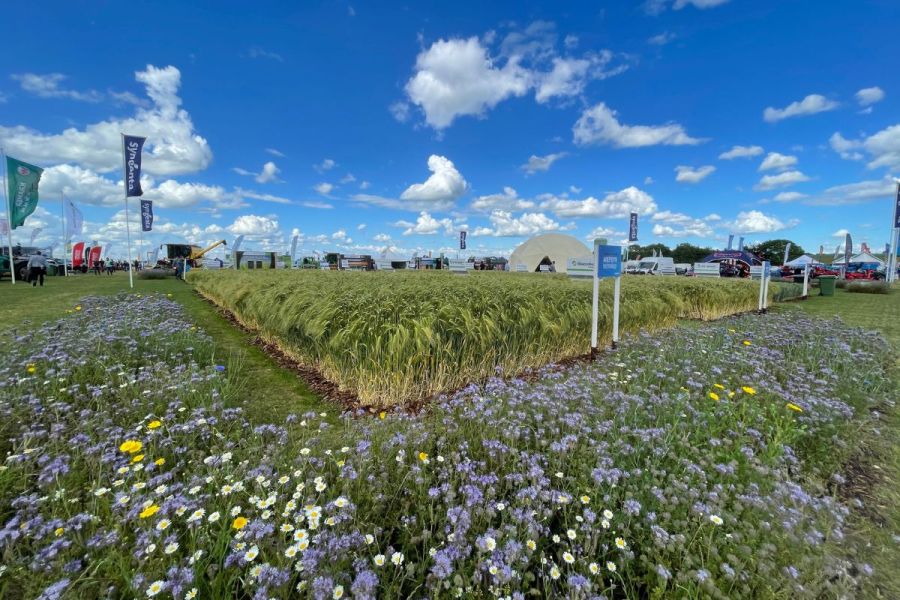A jam-packed seminar schedule saw crowds descend on the Cereals Event in June to hear experts speak on climate change, carbon, food security, input costs and whether ag policy works. CPM took it all in first-hand.
Ag policy doesn’t currently exist, but it needs to.
By Melanie Jenkins and Tom Allen-Stevens
There was no one topic of conversation dominating at this year’s Cereals Event, held at Chrishall Grange in Cambridgeshire. Instead, the overarching feeling was positive, even though the industry has never before had such a combination of external challenges to overcome.
Hot topics included implementing changes to try to mitigate climate change, understanding how on earth carbon credits can be utilised tactfully, navigating extortionate inputs costs profitably and getting to grips with evolving agricultural policy.
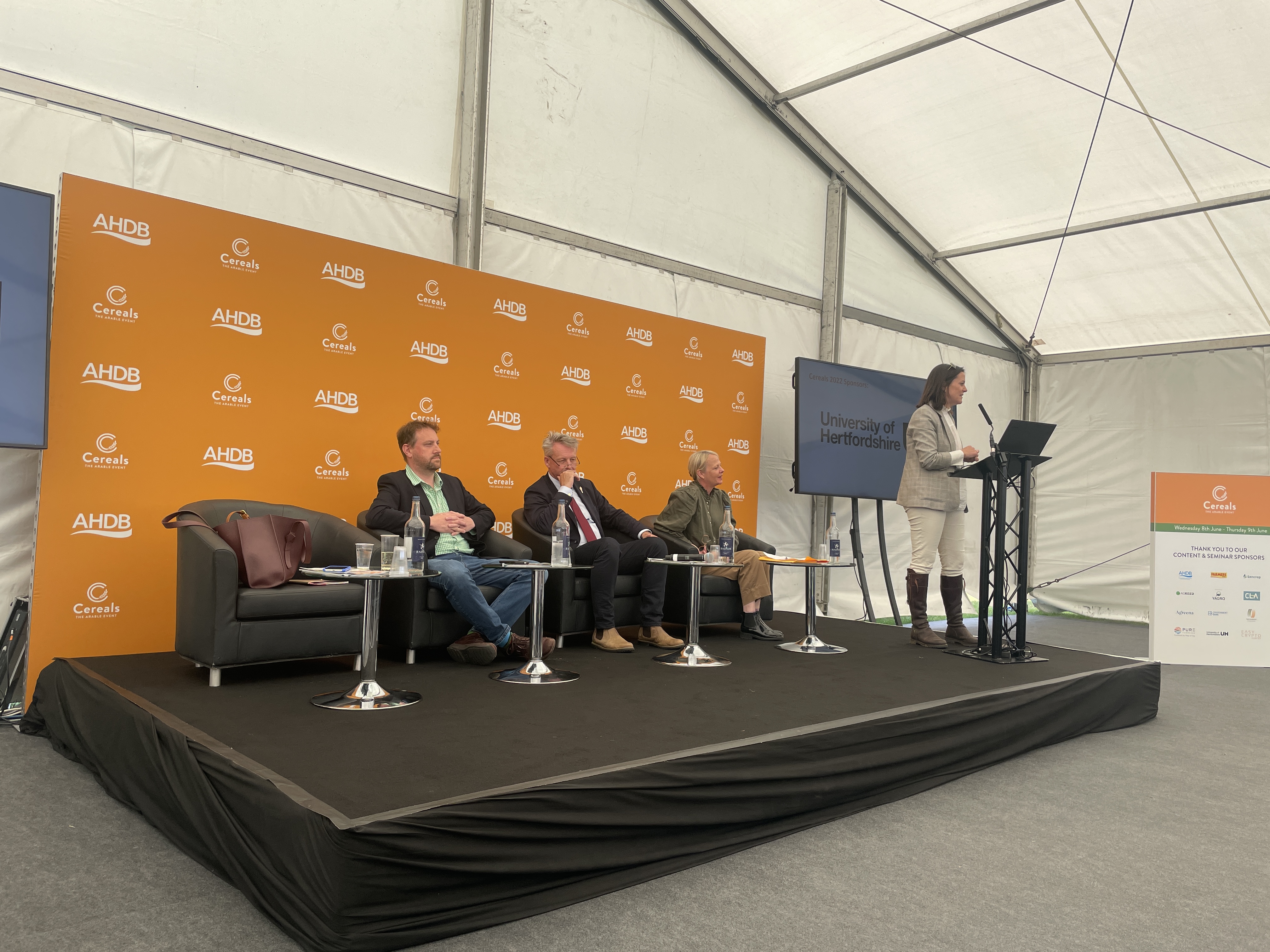
Emily Norton feels that it’s incredibly difficult to get answers about what farmers can expect from policy.
One of the most riveting seminars on the programme asked if agricultural policy is working. The overriding view from the panel was that there’s not even an agricultural policy at all.
Emily Norton of Savills feels that it’s incredibly difficult to get answers about what farmers can expect from policy. “We’re used to looking to our policy makers for answer to guide our businesses but we’re lacking business guidance to make sense of it all.
“It’s about policy and consequences. How do we know what’s the right thing to do if we can’t get business sense into business policy?”
Someone who is especially concerned about what future policy could mean is Baroness Kate Rock, chair of the Tenancy Working Group. “It’s essential to make sure that the new schemes are accessible to all tenants to ensure the long-term viability of the tenanted ag sector.”
Dr David Barling of the University of Hertfordshire feels that a good working policy is essential. “If ag policy doesn’t appeal to me as a tenant farmer, it’ll have failed. As voluntary schemes, the delivery and engagement of them is everything.
“We’re in a Catch 22 situation, where Defra says, ‘if the demand is there, we’ll put the money in’, but if Defra hasn’t designed a scheme farmers want then there won’t be demand.”
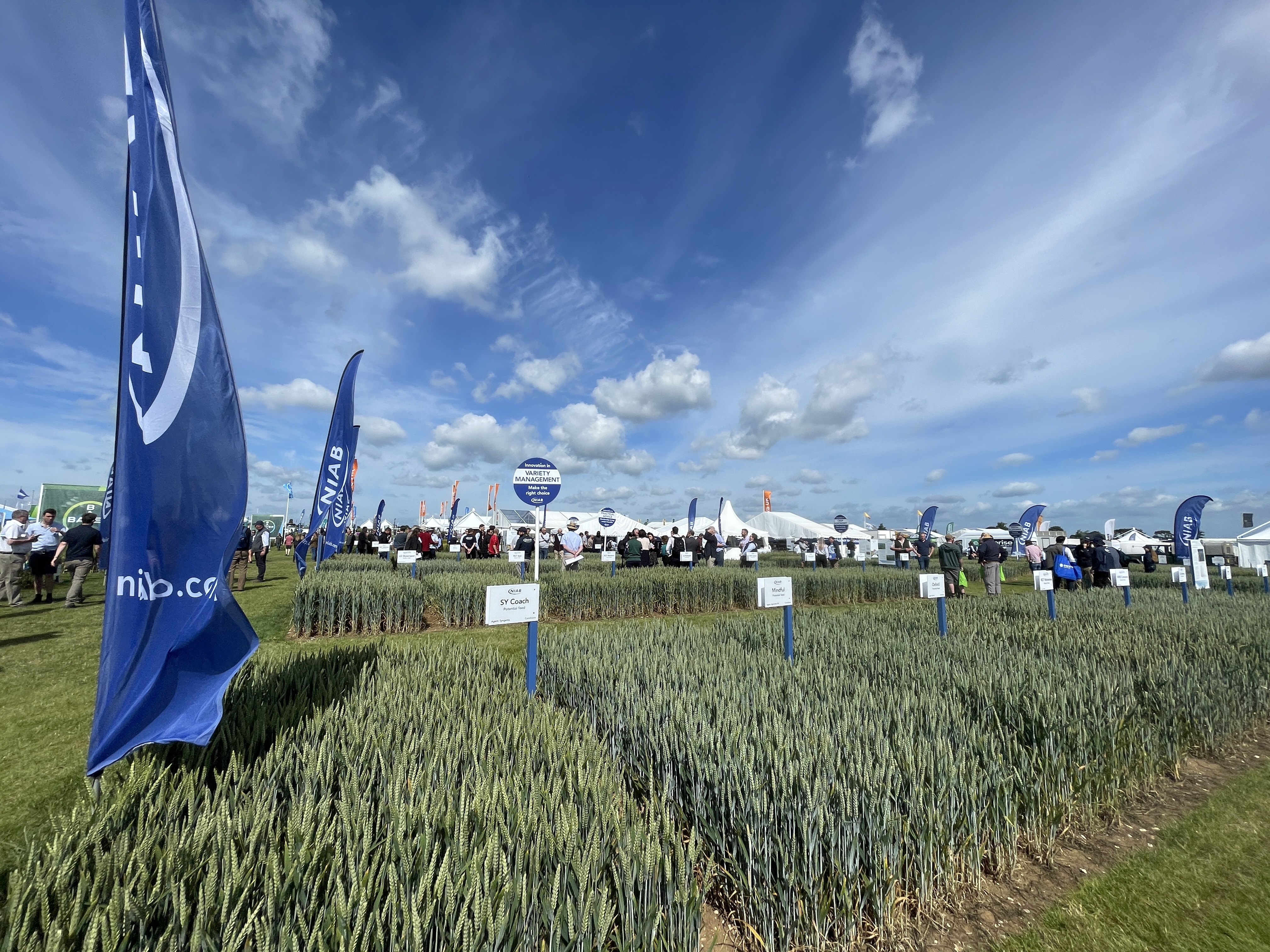
Farmers should be paid for alleviating the food security and environmental crises in a way that makes sense.
Tom Clarke, managing director of Green Farm, has been adopting regenerative practices on the 405ha he manages and feels that there isn’t currently an ag policy. “Ag policy doesn’t currently exist, but it needs to. The government has thrown out the idea that farming for farming’s sake is worth spending money on. ELMs is an environmental policy and whatever you get paid in the end will be less than a direct subsidy.
“We’re now in the midst of a global food security crisis and an environmental crisis and farmers should be paid for alleviating this in a way that makes sense.
“There’s a need for us to produce domestic food more than there’s ever been before. Our argument needs to be with the treasury and with government and this must be seen as a political issue again.”
But David feels that the situation in Ukraine has changed everything. “Can government policy ever keep up with this kind of volatility and can Defra schemes adapt to things like this happening?
“But food security is just one metric. Improving our soils is also a great thing to be doing and using government money to incentivise this is worthwhile,” he argues.
Carbon opportunities
But could private sector carbon credit schemes be another route to improving soils?
Although carbon is a hot topic, it’s one that the industry doesn’t feel confident about, according to Susan Twining of the CLA.
“Are carbon markets the Wild West or an opportunity not to be missed?” she asks. “We know that agricultural soils contain huge amounts of stored carbon and the same goes for hedgerows, so there’s a lot of potential income for farming.
“There’s also the additional benefits of climate resilience, reduced flood risk and erosion, improved soil health and higher yields,” she says.
“The question is whether this should be an income stream or not. There are things to consider in your own journey to net zero and to understand what it is you’re selling. Carbon offset credits are for someone else to use against their carbon use, so this carbon is no longer useable for your farm account.”
There are also two aspects of soil and hedgerow carbon which can be tricky to disseminate, she adds. “The first is additionality and permanence. Farmers may only be paid for additional carbon and not for what’s already in their soils, and though they take action to increase it they also to store it for the long term – permanence. This can be a challenge with soil carbon.”
Another thing to consider is how any carbon agreements interact with one another. “Farmers might have to consider how carbon schemes will sit with other Defra schemes such as the Sustainable Farming Incentive,” explains Susan.
“Defra has been clear that it’ll be possible to go into private sector schemes so long as there’s no double counting, but the question is whether private schemes will allow this. And we also need to get it right for the tenanted sector,” she adds.
“So there’s no single answer as to whether farmers should go into a carbon credit scheme but, either way, it’s important to store carbon even if it’s for your own use instead of selling it.”
But for the those who do want to sell their carbon, it’s a challenge to understand the market in the first place and there’s still a lot of variation in both measuring, monitoring and payments, according to Andrew Voysey of Soil Capital. “My view from talking to hundreds of farmers is that there’s still a lack of understanding about how the marketplace operates before we can get into details of what a scheme does or doesn’t do.”
And although carbon schemes are often based on the same factors, they have different boundaries, explains Susan. “There are a lot of good tools out there, but if you’re looking at your own carbon footprint, I’d suggest using the same tool consistently and getting the baseline measured to see where you can take action.”
But it’s not just carbon which is being monetised, farmers are also being encouraged to improve the environment and to get paid to do so. “There’s a lot of jargon in the new area of environmental land management,” according to Kate Russell of Tellus Natural Capital. “When we talk about natural capital, we’re considering soil, water, air, woodlands, hedges, waterbodies and all the things that these assets support.
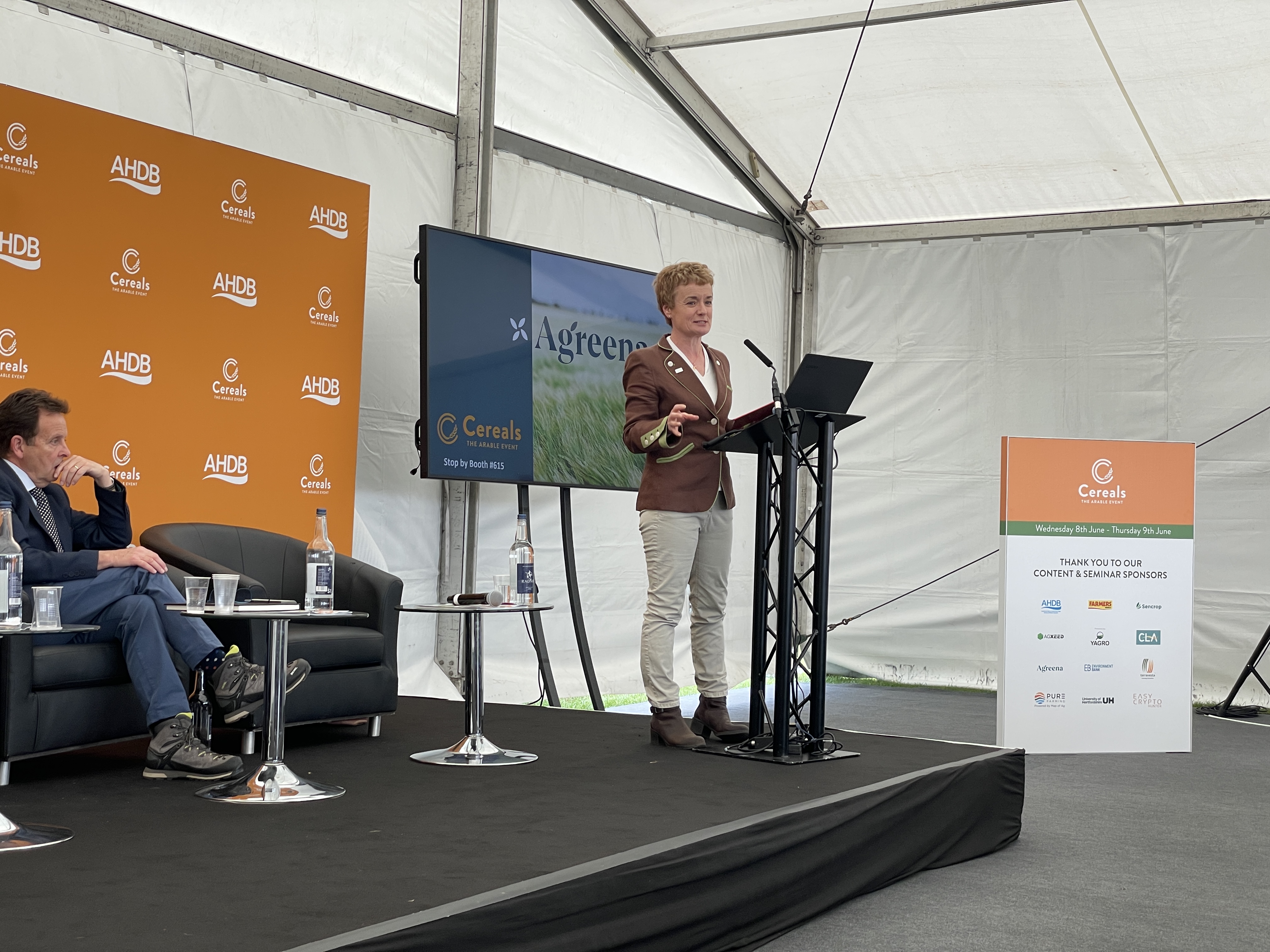
Natural capital delivers ecosystem services which are carbon capture, natural flood and air pollution mitigation, says Kate Russell.
“Natural capital delivers ecosystem services which are carbon capture, natural flood and air pollution mitigation,” she explains. “It’s almost a by-product of farming but it’s been overlooked and undervalued by society. So how do we make these things visible and valuable and, importantly, how do we integrate the delivery of these with and alongside productive agriculture? Farmers are the only people who can deliver these.”
According to Prof Fergus Lyon of Middlesex University and farmer at Easthall Farm, Hertfordshire, it’s important to embrace the environment for numerous reasons. “The world is changing so fast around us, we need to find ways to generate new income streams. We can also use the environment to reduce costs, so it’s about income and expenditure. By farming in different ways that work with nature, enhancing our soils, and increasing organic matter to improve resilience, we can then reduce our costs and engage with consumers.”
Fergus suggests using environmental stewardship as part of the rotation. In the private sector this could mean offsetting where external parties buy credits but there are still lots of issues to overcome, he says.
“We also have insetting, which I think will be more important in the future. This is where the buyers of crops or produce pay for the environmental benefits of producing it – meaning the purchaser pays a premium for the service.”
The third area of monetising the environment is ecosystem services, where organisations such as water companies pay farmers to do things. This could be reducing pollutants in water courses, which can have biodiversity benefits, he explains.
But one of the key issues is regulating all of this. “There’s a call for more regulation so there’s trust, but on the other hand this means there’ll be more monitoring and recording. So how will farmers do this and what’s the cost to them?”
Fergus also highlights questions around the idea of ‘stacking’. “This is where someone might pay for wildlife enhancement and someone else might pay for carbon storing. We don’t really know how this will work so we need more collaboration on that and who owns the carbon in the soil.”
But where is the trade off in taking agricultural land out of traditional production and putting it into environmental measures, asks Dr Alan Radbourne of the UK Centre for Ecology and Hydrology. “I can’t stress how important collecting data on your farm is for schemes going forward and to know where your carbon is.
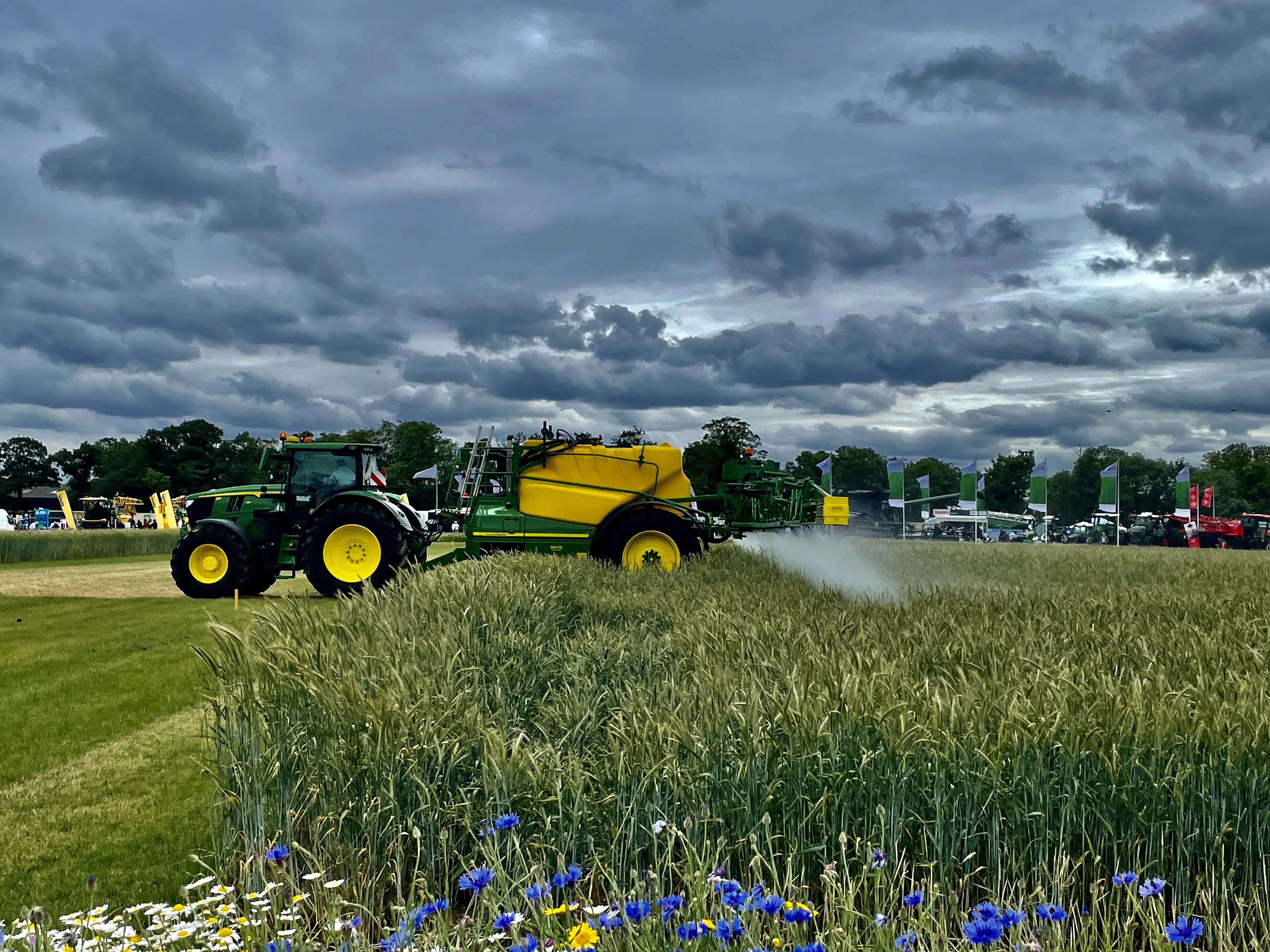
Tom Bradshaw believes that every time growers are more efficient in their production, it lowers their carbon footprint.
“Trading in credits and maximising emerging markets can be great for some people and the supply chain is going to be monitoring what farmers do more going forwards. So what transitions of management can you do now to show you’re a farm that’s willing and able to do this?” he challenges. “It’ll help with farm business resilience as a whole.”
According to Prof David Hill, chairman of the Environment Bank, the consequences of nature loss to business is huge. “Around 55% of global GDP relies on what nature provides. One fifth of these services are on the verge of collapse but if we restore these, that’s an extra $10.1 trillion per annum to the economy according to the World Economic Forum.”
But how does this all tie into adapting for climate change successfully?
Two of the big drivers behind changes targeted at tackling climate change are legislation and the financial markets, says Jon Foot of AHDB. “The financial pressure through the supply chain will drive change much faster than legislation and, though you may feel a lot of pressure at the moment, the pace will get faster,” he warns. “There’s a lot to be done but this shouldn’t all fall on agriculture.”
Tom Bradshaw, deputy president of the NFU, says the question he is often asked is whether now is the right time to focus on net zero with the emerging food crisis around the world. “Though this has been highly exacerbated by the war in Ukraine, it’s not solely because of it.
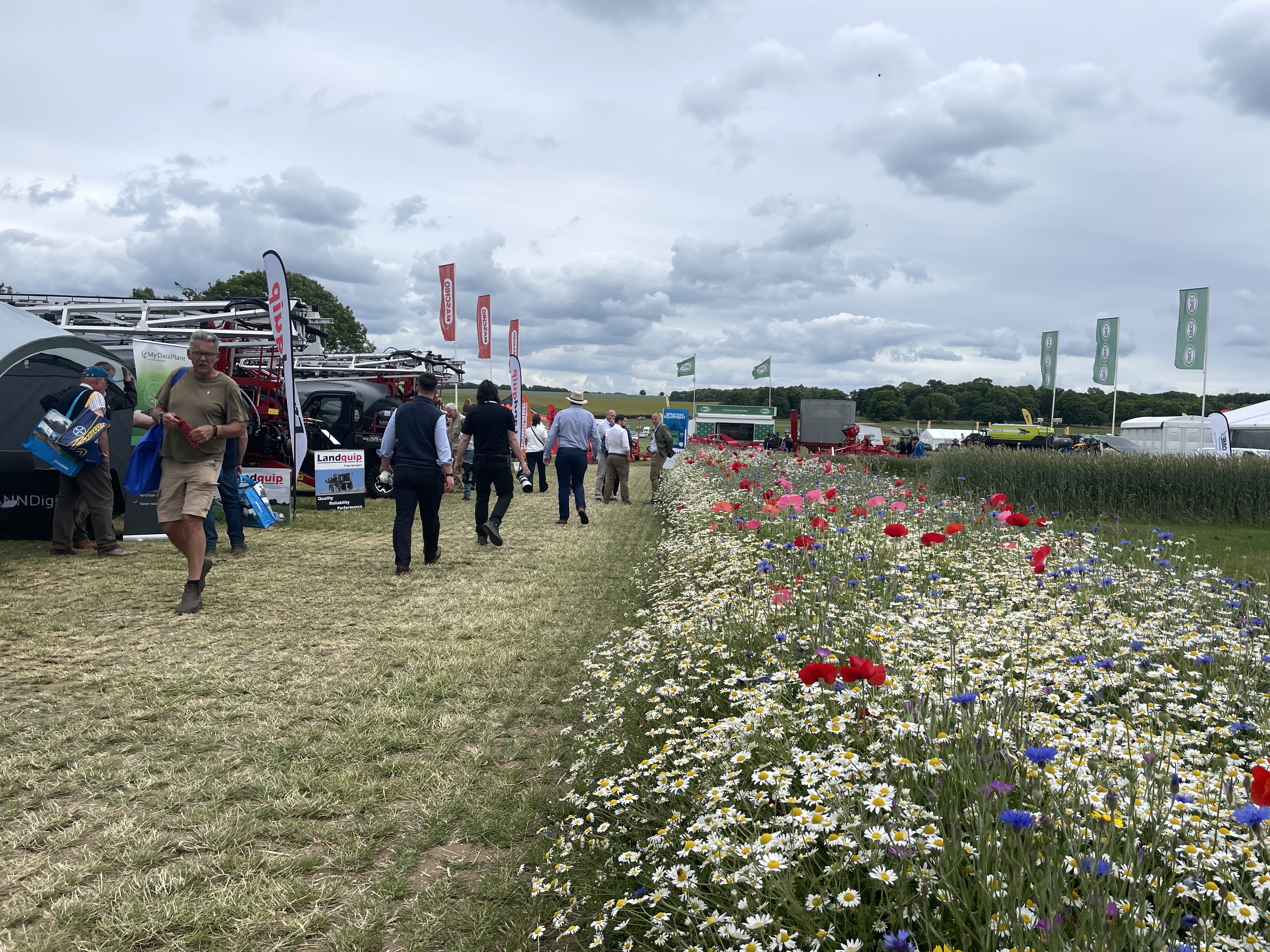
There’s a role for soil in fighting climate change as it holds more carbon than both the atmosphere and vegetation combined, says Dr Anne Bhogal.
“So now is the time as we can’t turn our back on net zero. We must make sure the moment is captured and we evolve our businesses with the future in mind,” he stresses.
“And though there’s money on offer for carbon trading, the easiest way to lower our carbon is to stop production but this isn’t acceptable as it’ll offshore carbon production.
“It’s important to make sure we don’t just export our carbon footprint to other parts of the world. This means being open about our concerns with the trade agreements which are struck. This has to be solved globally and we need trade to be a part of it.”
Tom believes that UK farming needs to have ambitions to have the lowest carbon footprint in the world. “If we don’t aim for this, then we’ll have a challenge to justify farming in the future.”
Inorganic fertiliser use is a big part of this and he says the drive should be to use it as efficiently as possible. “Every time you’re more efficient in your production, it lowers your carbon footprint. When I first evaluated our carbon footprint it highlighted artificial fertiliser as the biggest weakness. This and the high prices will drive us to do things differently.”
As well as evaluating input usage, Tom also advises looking at local energy production as a means to tackle climate change. “Either the electricity grid needs a big upgrade or energy should be produced on farm through solar and stored in batteries. Becoming more localised in our thinking with solar, wind and batteries is something we should consider.
“The Government says that ELMs is a key part of its climate change strategy but I’m not sure where net zero fits into this,” says Tom. “I think Defra should encourage and reward farmers who look at their baseline of carbon on farm and work from there. But society will demand more and this needs to be embedded in future decisions.”
And it all comes back around to soils, according to Dr Anne Bhogal of ADAS. “There’s a role for our soils in fighting climate change. Soils hold more carbon than is in both the atmosphere and vegetation combined. And though many soils in the UK can be in a steady state of carbon levels, the changes ar e important factors in either the intensification or mitigation of climate change.”
Input uncertainty sparks call for transparency
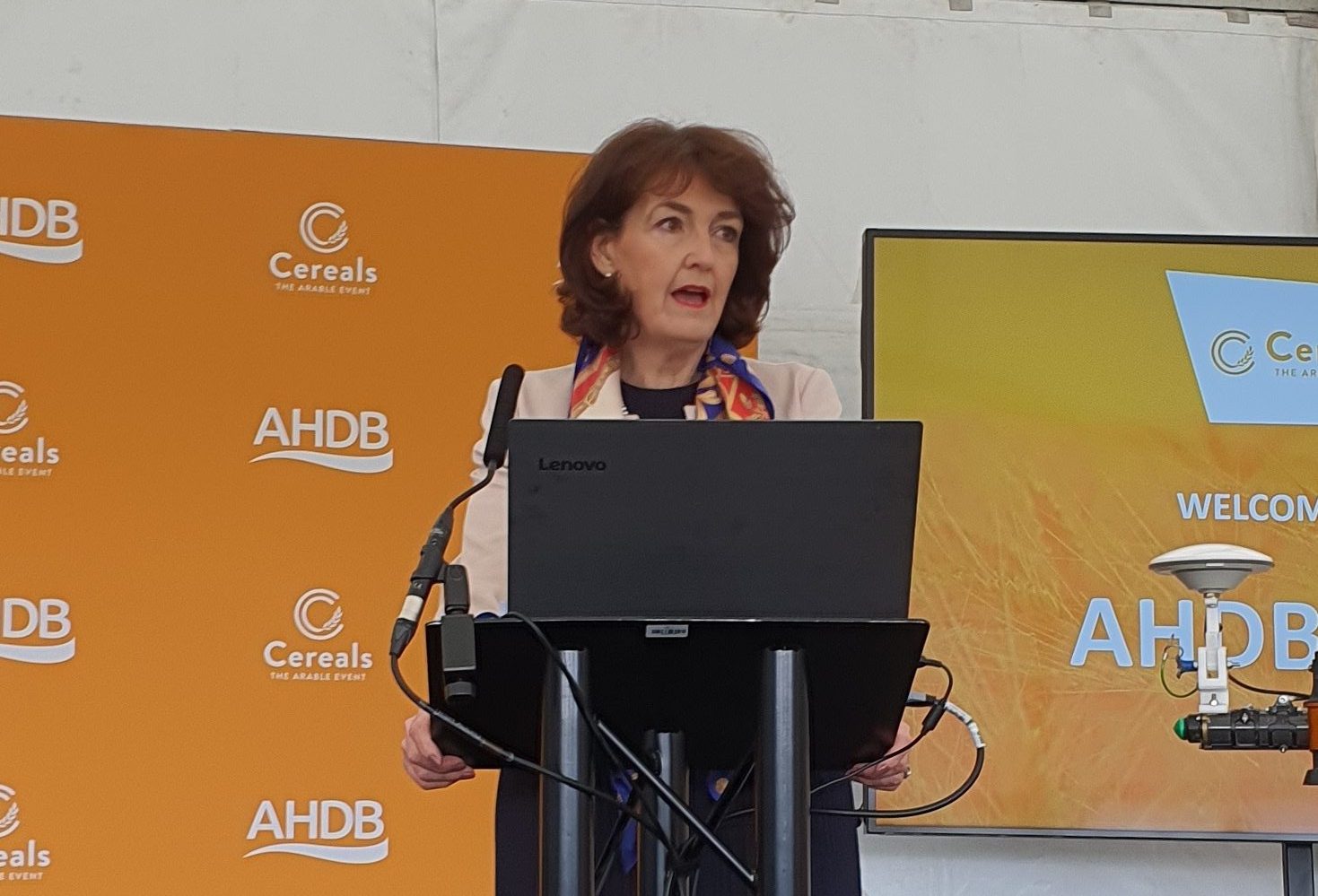
Jo Churchill said the government is listening to grower concerns and wants farmers to lead investment in R&D.
Volatile fertiliser pricing, a lack of transparency and unease among growers as to whether inputs will be available for next year’s crop have put confidence in cropping for the coming season at a low ebb, says the NFU.
The government has responded by assuring support for the arable sector in the short term and investment to bring forward farmer-led innovation.
“Growers feel like a gun is being held to their head,” says NFU deputy president Tom Bradshaw at a Cereals press briefing. “They’re asked to make a decision about ordering fertiliser in minutes or hours, and then the price is withdrawn from the marketplace. The ability to make informed decisions on buying inputs is very difficult.”
Tom notes that fertiliser manufacture is heavily dependent on gas and that Europe’s dependence on supplies from Russia does not bode well for the picture going forward. “This winter will be a crisis point,” he predicts.
To achieve greater transparency, the NFU is calling on suppliers to publish fertiliser prices immediately to help farm businesses plan for next year’s crop. Combinable crops board chairman Matt Culley says he had been taking a fresh look at nitrogen-use efficiency on his own Hampshire farm. He’s reduced his requirement by 15% across the board, as well as increased storage capacity to plan as much as he can for the season ahead.
“But growers are really struggling. It’s not just a question of locking into a reasonable price for inputs they need to grow the crops. It’s also whether these will actually be available next season. There’s also uncertainty over prices for the 2023 crop – milling premiums in particular will need to be attractive to warrant the extra expenditure. Many growers are saying the risk is just too high for the level of investment they’re required to make.”
The concerns were almost prophetic – it was as they spelled out the difficulties that CF Fertiliser UK announced it was closing one of its two manufacturing plants at Ince, near Chester, for good. The company – the only UK manufacturer of ammonia – cited the high gas prices, which make up 70% of the cost of fertiliser manufacture, for the move along with a 30% drop in demand from domestic customers since 2018.
This will permanently end the UK manufacture of ammonia at Ince – CF ceased all UK production in September 2021 but restarted its Billingham plant after coming to agreement with the UK government. Even with this support, it makes manufacture from the plant marginal, says CF.
Billingham currently puts 625,000t of ammonium nitrate on the market per year, mainly as Nitram, and the company says it has capacity to meet all forecasted domestic customer demand – the plant is 10-20% more efficient than Ince and has 40,000t of ammonia storage. But Ince produced all NS and NPK blends, including DoubleTop. Approx 575,000t/annum of AN products came from the factory before last September and CF has not disclosed how, or whether, it intends to fulfil these requirements.
Following the announcement, the NFU called for further information on exactly how much domestic supply of fertiliser will be available. Growers are advised not to panic buy and consult with their agronomist and usual supplier well in advance of next spring.
At the event, Defra minister Jo Churchill says she recognises the concerns over fertiliser and the news from CF in particular. “We are listening, and we’re here to support you,” she says.
Bringing forward half the BPS payment to July is not “a silver bullet”, but is designed to help ease cash flow pressures.
As minister for agri-innovation and climate adaption, she was keen to emphasise the “exciting role that technology has in addressing the challenges that we face in farming”. She highlights the Genetic Technology Precision Breeding Bill, that will allow for field trials of gene-edited crops to proceed in England without GM restrictions, and the potential of the technology to increase yield, reduce cost, improve the environment and resilience to climate change.
“The potential is huge, and we need to unlock it fast. And we need to enable you, the farmer, to be at the forefront. The government is making significant investments into innovation, driving that transformation of the cutting-edge research into practical farmer-led solutions,” she claims.
The minister announced a new £30M fund to help farmers add value to their food produce, as part of the Farming Investment Fund. Defra’s Farming Innovation Programme is “a central pillar” and has committed over £40M into R&D, led by farmers, growers and agri-food businesses, since October. FIP is part of an overall commitment of £270M planned over the next 6-7 years, she says.
“This will maximise the impact of investment in innovation. And crucially, and the bit that farmers talk to me most regularly about, is how we get hold of it on farm – and that is what these are intended to do.”
Despite the investment, some farmers have complained tight restrictions placed on funds such as the Farming Transformation Fund and Research Starter Pilots put planned farmer-led R&D projects outside the scope. Discussions on Defra’s Accelerating Adoption package, which will be co-designed with farmers and was due to launch this autumn, have not yet commenced.
This article was taken from the latest issue of CPM. For more articles like this, subscribe here.

